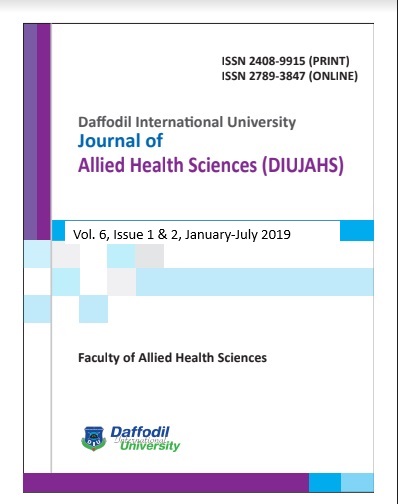Thalassemia in Bangladesh:
Current Situation and Prevention Strategies
DOI:
https://doi.org/10.36481/diuhls.v06i1-2.ssdfy525Keywords:
Thalassemia, Disease PreventionAbstract
Thalassemia is a common form of hemoglobin disorder that has been emerged as a global public health concern. It is more common in developing countries than the developed countries. There is a lack of adequate data on the population-based estimation of thalassemia in the country. A scoping study was performed according to York methodology. The study aimed to find out the current situation and prevention strategies of thalassemia in Bangladesh. World Health Organization (WHO) estimates beta-thalassemia carrier and hemoglobin E (HbE) carrier as 3% and 4% respectively in Bangladesh. A study among school children shows that the prevalence of beta-thalassemia trait and HbE trait in Bangladesh are 4.1% and 6.1% respectively. Although WHO has advocated and promoted thalassemia prevention programs from the early 1970s and several countries have already set up comprehensive national thalassemia prevention programs, there is no such program in Bangladesh still now. Considering the ethical issues, government policy, local structures, social values, religion, and cultural tradition of our country some comprehensive thalassemia prevention strategies can be suggested. Health education, awareness, premarital screening and thalassemia carrier identification, vulnerable couple counseling, fetal DNA analysis and family screening programs can be taken by the government of Bangladesh. These preventative strategies could be effective for other developing countries as well.

